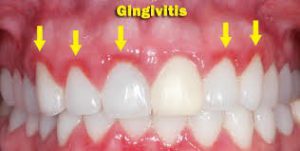
Part 1. Why smoking is bad for you?
Much has been said about the effect of smoking on Periodontal Health. Evidence is mounting about the adverse effects of health outcomes in smokers. Apart from the risk of lung cancer and cardio-vascular diseases, smokers also tend to develop more serious periodontal disease lesions, and if they undertake conventional periodontal treatment, their healing response tends to be slower and the recovery incomplete. The reasons for this are based on the multifaceted biological responses to the release of NICOTINE in burning tobacco.
Part 2. Biological Effect
Inhalation of tobacco smoke delivers Nicotine into the blood stream very efficiently via the gaseous exchange on the pulmonary alveoli (your lungs). Similar mechanisms are also used when we get oxygen into our blood stream when breathing fresh air. Nicotine is a powerful vaso-constrictor – meaning a tiny amount in the blood stream can sustain the closing down of capillary vessels (particularly in the terminal branches of the capillary tree- such as finger tips and gum margins). The slowing down or reduction of blood flow has the net effect of decreasing the supply of oxygen and nutrients into the affected area. The longer-term effect of diminishing blood flow is that it forces the affected tissue to alter its cellular content in order to survive the biological “Hard Times”. Typically, such tissue becomes more fibrous (increased collagen content or fibre-to-cell ratio). This would explain why the gingival tissue in long term smokers tend to have more serious (or advanced) periodontal disease, they don’t seem to bleed that much from their gums. However, if a smoker quits smoking successfully, he/she may find that gum bleeding may resume. This observation leads to the erroneous conclusion that smoking cessation is bad for you because it makes your gums bleed more. In effect, smoking masks the major signs of periodontal disease – i.e. gum bleeding.
Part 3. Can full recovery be expected if smoking cessation is successful?
Yes and No. That would depend on the duration of the smoking habit, the age of the patient etc. In general terms, the longer the smoking habit, the more fibrotic the gingiva becomes, and the longer it takes for the circulation to return and hopefully, the type and content.
Part 4. Where can I access help or assistance to quit smoking?
NSW Health (department of health) is supporting any genuine effort to quit smoking. Go to (I can quit) website (http://www.icanquit.com.au) for further information and assistance.







